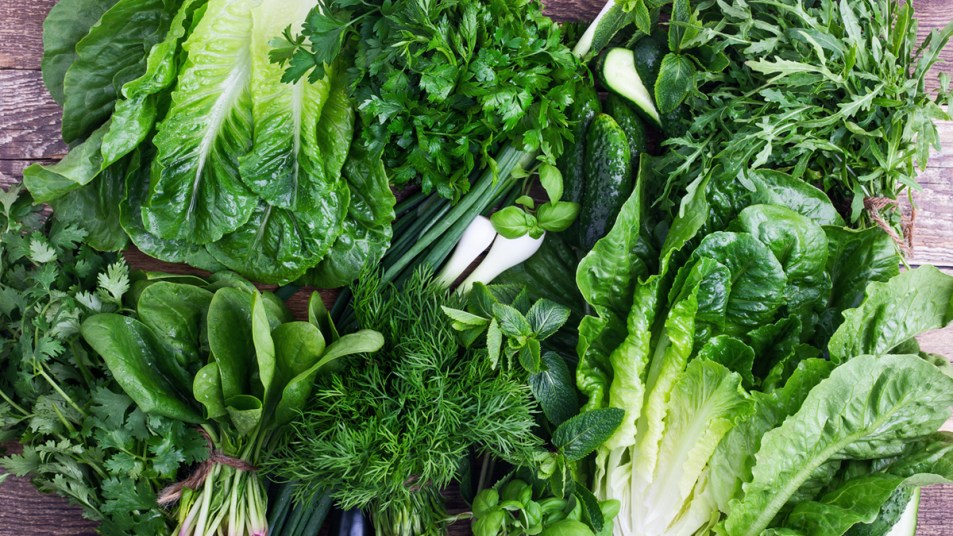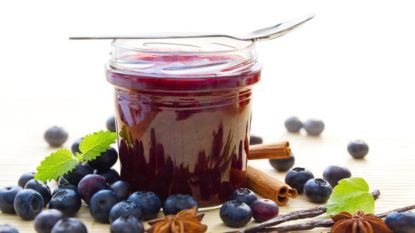4 Delicious Greens That Balance Gut Health, Lower Blood Pressure, and Boost Immunity

When you toss together a salad, what types of greens usually land on your plate? Hopefully it’s a large assortment. Adding different lettuces to your salad will not only improve the texture and colorful appeal, but also give you a wide variety of health benefits. That includes boosting your vitamin, antioxidant, water, and fiber intake.
Salad greens are best consumed raw to preserve their nutritional content. If you do want to cook certain varieties for a particular dish, such as spinach or arugula, remember that a quick sauté or wilting is all you need. That way, you will still be able to enjoy your greens without losing too many water-soluble vitamins, such as vitamin C and B.
Eating different types of lettuce on a regular basis might not be so easy. Leafy greens are very dirty and often house a lot of pesticides, so they require rigorous cleaning. High-end varieties can also get expensive, and buying these fresh greens in bulk to save money can actually lead to waste. However, if you buy local, buy in season, and buy only what you need, you may still be able to create the salads of your dreams. Plus, many salad greens are relatively easy to grow at home.
Want to know which greens you should add to your salad bowl next? Check out these nutritious varieties.
Leaf chicory
Endives, radicchio, escarole, and frisée are all forms of leaf chicory. These bitter greens are known to improve digestion because they contain inulin, a soluble plant fiber that acts as a prebiotic in the body. As inulin ferments, it triggers the growth of beneficial gut bacteria. Also, that bitter flavor is a good thing! Bitter foods increase bile production, which can help digestion as well.
Wondering how to style leaf chicory? Red radicchio is the perfect edible salad bowl. Endives are sturdy enough to be braised, seared, or sautéed, and can even be used as dressing dippers. Escarole holds up beautifully in an Italian bean soup, and raw frisée pairs well with rich and creamy dressings.
Vitamins and minerals in leaf chicory: Vitamins A, B, and C, calcium, potassium, iron, folic acid, magnesium.
Head lettuce
Head lettuce refers to any lettuce that grows in a bunch, or a compact head. This group includes several very popular varieties, such as iceberg (or crisp head), Boston, Bibb, and Romaine. Though head lettuces are not as high in fiber as other salad varieties, they hold a lot of water and contain substantial amounts of vitamins. Consuming vegetables high in water will help your body digest water-soluble vitamins.
Boston, Bibb, and Romaine all contain high amounts of potassium. According to the American Heart Association, a diet high in potassium and low in sodium can help control high blood pressure. This in turn may reduce the risk of cardiovascular disease.
Head lettuce is extremely versatile in salad. The tender leaves of Boston lettuce (also called butter lettuce) make a great base for light or bold dressings, such as a simple vinaigrette or an avocado and lime blend. Both Bibb and iceberg lettuce make perfect wedge salads. Bibb lettuce has the added appeal of a blooming flower appearance when plated! Romaine lettuce cut in halves can be quickly grilled, then sprinkled with parmesan, olive oil, and a balsamic reduction for a tasty summer treat.
Vitamins and minerals in head lettuce: vitamins A and C, calcium, magnesium, potassium, folate, and iron (romaine).
Spinach
Spinach is an incredibly low-calorie, nutrient-dense vegetable. Just one cup of raw spinach offers a 167 mg dose of potassium and 30 mg of calcium. Foods that are high in potassium may not only improve blood pressure over time, but also reduce the risk of osteoporosis and the formation of kidney stones.
Spinach also contains a significant amount of folate — a B-vitamin that the body needs to make DNA and other genetic material — and the antioxidants kaempferol and quercetin. Kaempferol has anti-inflammatory properties and may lower the risk of certain cancers, while quercetin may improve immune function and memory function.
Spinach can be tossed into any spring mix for a boost of nutrients and a darker flavor. Or, it can stand alone in a sweet salad with goat cheese crumbles, walnuts, apple slices, and an apple cider or raspberry vinaigrette. To create a simple side dish, gently sauté spinach in a pan with olive oil and garlic.
Vitamins and minerals in spinach: Vitamins A, C, and K, potassium, calcium, folate, iron, and magnesium.
Arugula.
Arugula is a powerhouse green well known for its peppery flavor. While it contains lower amounts of vitamins and minerals than other leafy salads, it is very high in fiber and antioxidants, including lutein and zeaxanthin. These two plant compounds are carotenoids that protect the eyes from free radical damage caused by oxygen and sunlight. Arugula also contains glucosinolates, which are organic compounds that may inhibit carcinogens in the body and protect against cancer.
Arugula can be added to nearly any salad for a more complex, peppery crunch. Its bold flavor does well with shaved parmesan, olive oil, lemon juice, and garlic. Looking for a creative twist? Try adding arugula to a vegetable pizza with goat cheese and balsamic dressing. Or, blend it into fresh pesto for a boost of nutrition. As an added bonus, arugula typically lasts longer in the fridge than the average spring mix.
Vitamins and minerals in arugula: Vitamins A and C, beta-carotene, calcium, magnesium, folate, potassium, and phosphorous.













